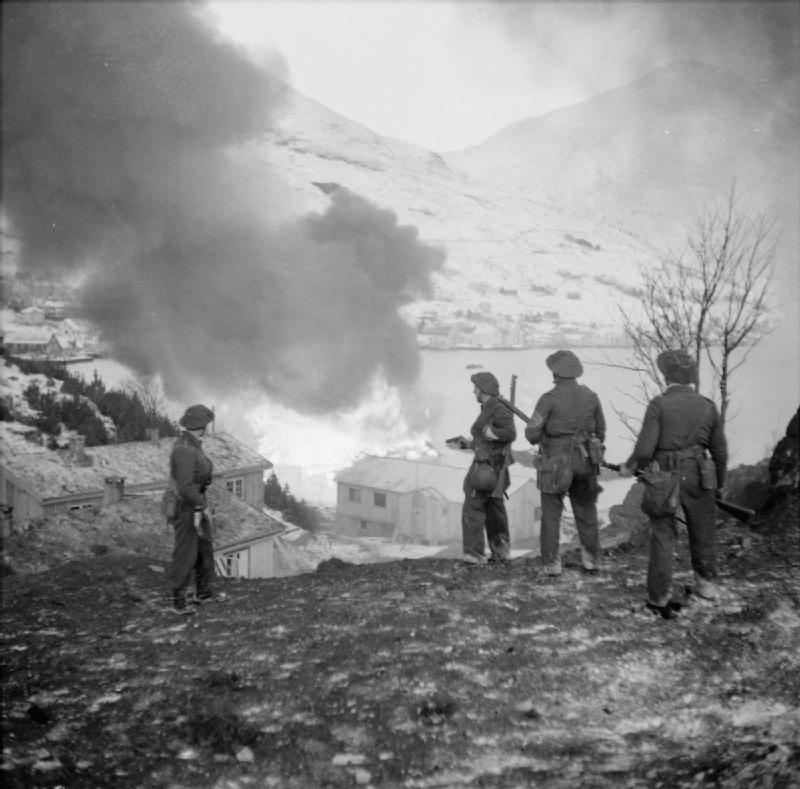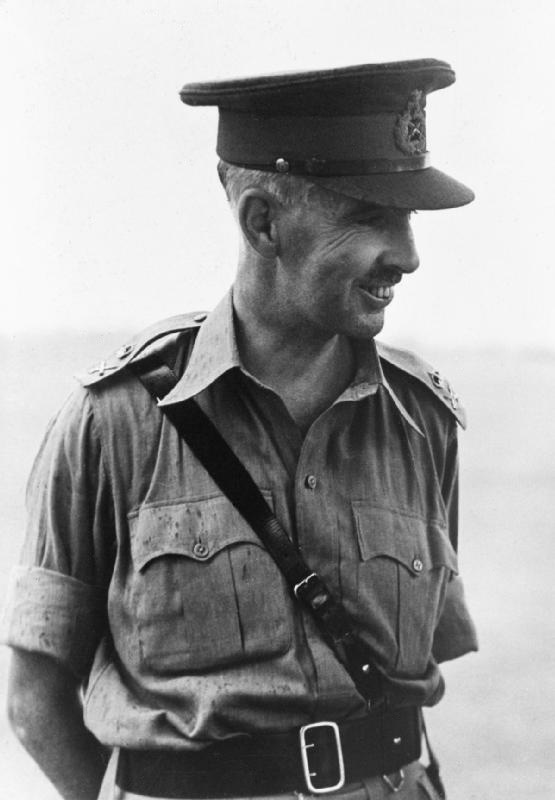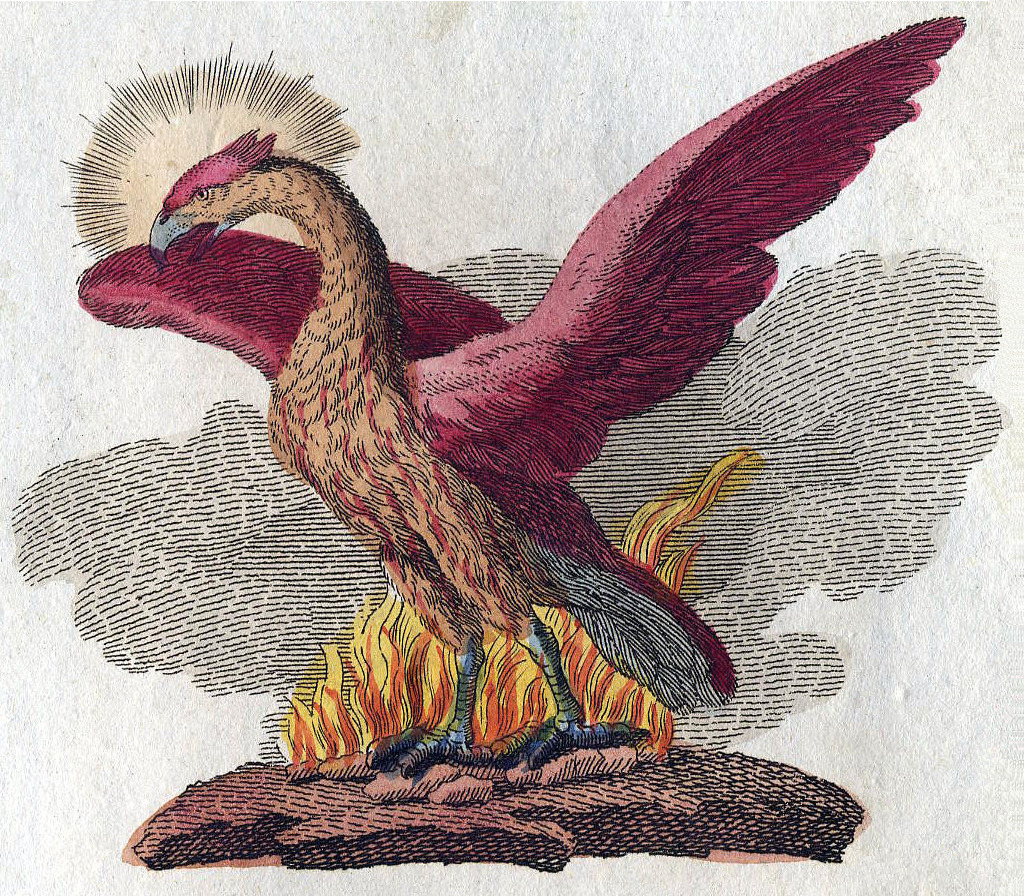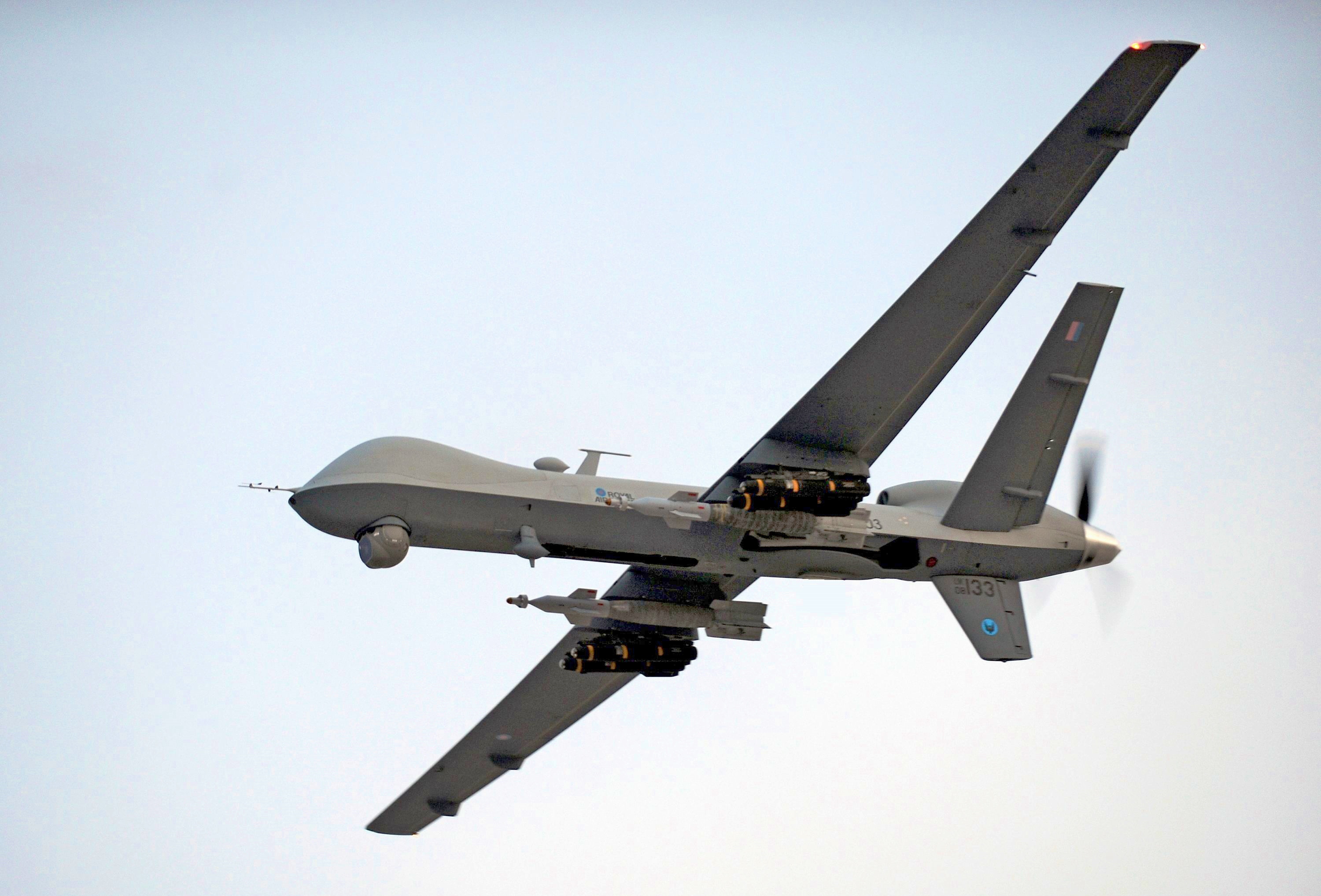|
Force 136
Force 136 was a far eastern branch of the British World War II intelligence organisation, the Special Operations Executive (SOE). Originally set up in 1941 as the India Mission with the cover name of GSI(k), it absorbed what was left of SOE's Oriental Mission in April 1942. The man in overall charge for the duration of its existence was Colin Mackenzie. The organisation was established to encourage and supply indigenous resistance movements in enemy-occupied territory, and occasionally mount clandestine sabotage operations. Force 136 operated in the regions of the South-East Asian Theatre of World War II which were occupied by Japan from 1941 to 1945: Burma, Malaya, China, Sumatra, Siam, and French Indochina (FIC). Although the top command of Force 136 were British officers and civilians, most of those it trained and employed as agents were indigenous to the regions in which they operated. Burmese, Indians and Chinese were trained as agents for missions in Burma, for example. ... [...More Info...] [...Related Items...] OR: [Wikipedia] [Google] [Baidu] |
South East Asia Command
South East Asia Command (SEAC) was the body set up to be in overall charge of Allied operations in the South-East Asian Theatre during the Second World War. History Organisation The initial supreme commander of the theatre was General Sir Archibald Wavell while head of the short-lived American-British-Dutch-Australian Command (ABDACOM) which was dissolved after the fall of Singapore and the Dutch East Indies. Afterwards, Allied forces in the region were divided between SEAC and the South West Pacific Area command (SWPA). In August 1943, the Allies created the combined South East Asian Command, to assume overall strategic command of all air, sea and land operations of all national contingents in the theatre. In August 1943, with the agreement of the Combined Chiefs of Staff, Winston Churchill appointed Admiral Lord Louis Mountbatten as Supreme Allied Commander South East Asia. US Army General Joseph Stilwell was appointed deputy supreme commander. Stilwell was also, officially ... [...More Info...] [...Related Items...] OR: [Wikipedia] [Google] [Baidu] |
Raid (military)
Raiding, also known as depredation, is a military tactic or operational warfare mission which has a specific purpose. Raiders do not capture and hold a location, but quickly retreat to a previous defended position before enemy forces can respond in a coordinated manner or formulate a counter-attack. A raiding group may consist of combatants specially trained in this tactic, such as commandos, or as a special mission assigned to any regular troops. Raids are often a standard tactic in irregular warfare, employed by warriors, guerrilla fighters or other irregular military forces. Some raids are large, for example the Sullivan Expedition. The purposes of a raid may include: * to demoralize, confuse, or exhaust the enemy; * to ransack, pillage, or plunder * to destroy specific goods or installations of military or economic value; * to free POWs * to capture enemy soldiers for interrogation; * to kill or capture specific key persons; * to gather intelligence. Land Tribal so ... [...More Info...] [...Related Items...] OR: [Wikipedia] [Google] [Baidu] |
Japanese Invasion Of Malaya
The Malayan campaign, referred to by Japanese sources as the , was a military campaign fought by Allied and Axis forces in Malaya, from 8 December 1941 – 15 February 1942 during the Second World War. It was dominated by land battles between British Commonwealth army units and the Imperial Japanese Army, with minor skirmishes at the beginning of the campaign between British Commonwealth and Royal Thai Police. The Japanese had air and naval supremacy from the opening days of the campaign. For the British, Indian, Australian, and Malayan forces defending the colony, the campaign was a total disaster. The operation is notable for the Japanese use of bicycle infantry, which allowed troops to carry more equipment and swiftly move through thick jungle terrain. Royal Engineers, equipped with demolition charges, destroyed over a hundred bridges during the retreat, yet this did little to delay the Japanese. By the time the Japanese had captured Singapore, they had suffered 9, ... [...More Info...] [...Related Items...] OR: [Wikipedia] [Google] [Baidu] |
World War II
World War II or the Second World War, often abbreviated as WWII or WW2, was a world war that lasted from 1939 to 1945. It involved the World War II by country, vast majority of the world's countries—including all of the great powers—forming two opposing military alliances: the Allies of World War II, Allies and the Axis powers. World War II was a total war that directly involved more than 100 million Military personnel, personnel from more than 30 countries. The major participants in the war threw their entire economic, industrial, and scientific capabilities behind the war effort, blurring the distinction between civilian and military resources. Air warfare of World War II, Aircraft played a major role in the conflict, enabling the strategic bombing of population centres and deploying the Atomic bombings of Hiroshima and Nagasaki, only two nuclear weapons ever used in war. World War II was by far the List of wars by death toll, deadliest conflict in hu ... [...More Info...] [...Related Items...] OR: [Wikipedia] [Google] [Baidu] |
Phoenix (mythology)
The phoenix is an immortal bird associated with Greek mythology (with analogs in many cultures) that cyclically regenerates or is otherwise born again. Associated with the sun, a phoenix obtains new life by rising from the ashes of its predecessor. Some legends say it dies in a show of flames and combustion, others that it simply dies and decomposes before being born again. In the ''Motif-Index of Folk-Literature'', a tool used by folklorists, the phoenix is classified as motif B32.Thompson. (2001: 581). The origin of the phoenix has been attributed to Ancient Egypt by Herodotus and later 19th-century scholars, but other scholars think the Egyptian texts may have been influenced by classical folklore. Over time the phoenix motif spread and gained a variety of new associations; Herodotus, Lucan, Pliny the Elder, Pope Clement I, Lactantius, Ovid, and Isidore of Seville are among those who have contributed to the retelling and transmission of the phoenix motif. Over time, extendin ... [...More Info...] [...Related Items...] OR: [Wikipedia] [Google] [Baidu] |
Sri Lanka
Sri Lanka (, ; si, ශ්රී ලංකා, Śrī Laṅkā, translit-std=ISO (); ta, இலங்கை, Ilaṅkai, translit-std=ISO ()), formerly known as Ceylon and officially the Democratic Socialist Republic of Sri Lanka, is an island country in South Asia. It lies in the Indian Ocean, southwest of the Bay of Bengal, and southeast of the Arabian Sea; it is separated from the Indian subcontinent by the Gulf of Mannar and the Palk Strait. Sri Lanka shares a maritime border with India and Maldives. Sri Jayawardenepura Kotte is its legislative capital, and Colombo is its List of cities in Sri Lanka, largest city and financial centre. Sri Lanka has a population of around 22 million (2020) and is a multinational state, home to diverse cultures, languages, and ethnicities. The Sinhalese people, Sinhalese are the majority of the nation's population. The Tamils, who are a large minority group, have also played an influential role in the island's history. Other long establ ... [...More Info...] [...Related Items...] OR: [Wikipedia] [Google] [Baidu] |
Kandy
Kandy ( si, මහනුවර ''Mahanuwara'', ; ta, கண்டி Kandy, ) is a major city in Sri Lanka located in the Central Province. It was the last capital of the ancient kings' era of Sri Lanka. The city lies in the midst of hills in the Kandy plateau, which crosses an area of tropical plantations, mainly tea. Kandy is both an administrative and religious city and is also the capital of the Central Province. Kandy is the home of the Temple of the Tooth Relic (''Sri Dalada Maligawa''), one of the most sacred places of worship in the Buddhist world. It was declared a world heritage site by UNESCO in 1988. Historically the local Buddhist rulers resisted Portuguese, Dutch, and British colonial expansion and occupation. Etymology The city and the region have been known by many different names and versions of those names. Some scholars suggest that the original name of Kandy was Katubulu Nuwara located near the present Watapuluwa. However, the more popular historic ... [...More Info...] [...Related Items...] OR: [Wikipedia] [Google] [Baidu] |
Special Operations Executive
The Special Operations Executive (SOE) was a secret British World War II organisation. It was officially formed on 22 July 1940 under Minister of Economic Warfare Hugh Dalton, from the amalgamation of three existing secret organisations. Its purpose was to conduct espionage, sabotage and reconnaissance in occupied Europe (and later, also in occupied Southeast Asia) against the Axis powers, and to aid local resistance movements. Few people were aware of SOE's existence. Those who were part of it or liaised with it were sometimes referred to as the " Baker Street Irregulars", after the location of its London headquarters. It was also known as "Churchill's Secret Army" or the "Ministry of Ungentlemanly Warfare". Its various branches, and sometimes the organisation as a whole, were concealed for security purposes behind names such as the "Joint Technical Board" or the "Inter-Service Research Bureau", or fictitious branches of the Air Ministry, Admiralty or War Office. SOE operat ... [...More Info...] [...Related Items...] OR: [Wikipedia] [Google] [Baidu] |
Urban Warfare
Urban warfare is combat conducted in urban areas such as towns and city, cities. Urban combat differs from combat in the open at both the Military operation, operational and the Military tactics, tactical levels. Complicating factors in urban warfare include the presence of civilians and the complexity of the urban terrain. Urban combat operations may be conducted to capitalize on strategic or tactical advantages associated with the possession or the control of a particular urban area or to deny these advantages to the enemy. Fighting in urban areas negates the advantages that one side may have over the other in armor, heavy artillery, or air support. Ambushes laid down by small groups of soldiers with handheld anti-tank weapons can destroy entire columns of modern armor (as in the Battle of Grozny (1994–95), First Battle of Grozny), while artillery and air support can be severely reduced if the "superior" party wants to limit civilian casualties as much as possible, but the def ... [...More Info...] [...Related Items...] OR: [Wikipedia] [Google] [Baidu] |
Unconventional Warfare
Unconventional warfare (UW) is broadly defined as "military and quasi-military operations other than conventional warfare" and may use covert forces, subversion, or guerrilla warfare. This is typically done to avoid escalation into conventional warfare as well as international conventions. Description Aside from the earlier definition of warfare that is not conventional, unconventional warfare has also been described as: There is another type of warfare— new in its intensity, ancient in its origin—war by guerrillas, subversives, insurgents, assassins; war by ambush instead of by combat, by infiltration instead of aggression, seeking victory by eroding and exhausting the enemy instead of engaging him. It preys on unrest. Methods and organization Unconventional warfare targets the civilian population psychologically to win hearts and minds, and only targets military and political bodies for that purpose, seeking to render the military proficiency of the enemy irrele ... [...More Info...] [...Related Items...] OR: [Wikipedia] [Google] [Baidu] |
Targeted Killing
Targeted killing is a form of murder or assassination carried out by governments outside a judicial procedure or a battlefield. Since the late 20th century, the legal status of targeted killing has become a subject of contention within and between various nations. Historically, at least since the mid-eighteenth century, Western thinking has generally considered the use of assassination as a tool of statecraft to be illegal. Some academics, military personnel and officials describe targeted killing as legitimate within the context of self-defense, when employed against terrorists or combatants engaged in asymmetrical warfare. They argue that drones are more humane and more accurate than manned vehicles, and that targeted or "named killings" do not occur in any context other than a declared state of war. Scholars are also divided as to whether targeted killings are an effective counterterrorism strategy. Africa Targeted killings have also been used in Somalia, Kenya, Rwanda and ... [...More Info...] [...Related Items...] OR: [Wikipedia] [Google] [Baidu] |









